Support strong Canadian climate journalism for 2025
Ontario's decision to ban ground-mounted solar farms on prime agricultural land exposes long-standing differing opinions about whether the two land uses are compatible.
While the Ford government claims the ban is essential to protect the province's valuable farmland, experts warn it could stifle future opportunities for innovative solutions like agrivoltaics, a dual-use system where crops and solar panels coexist, producing both food and energy.
Joshua Pearce, Western University’s John M. Thompson Chair in Information Technology and Innovation, argues that banning solar farms on agricultural land will make Ontario's farmers less competitive compared to those in other jurisdictions that are rushing to install agrivoltaics.
“Agrivoltaics creates a microclimate near and under the panels that conserves water and protects crops,” Pearce said. “Not only do farmers enjoy lucrative land leases from solar operators, but they also enjoy increased yields on their own crops.”
He finds it perplexing that the province would outlaw this method. “Who wants to walk up to farmers and tell them to their faces they are not allowed to install a solar system that will increase the food available and their agricultural income and provide them with stable annual income from land leases to the solar developers for 25 years?” Pearce said. “When farmers take a look at the data, I think they are going to be mad,” he added.
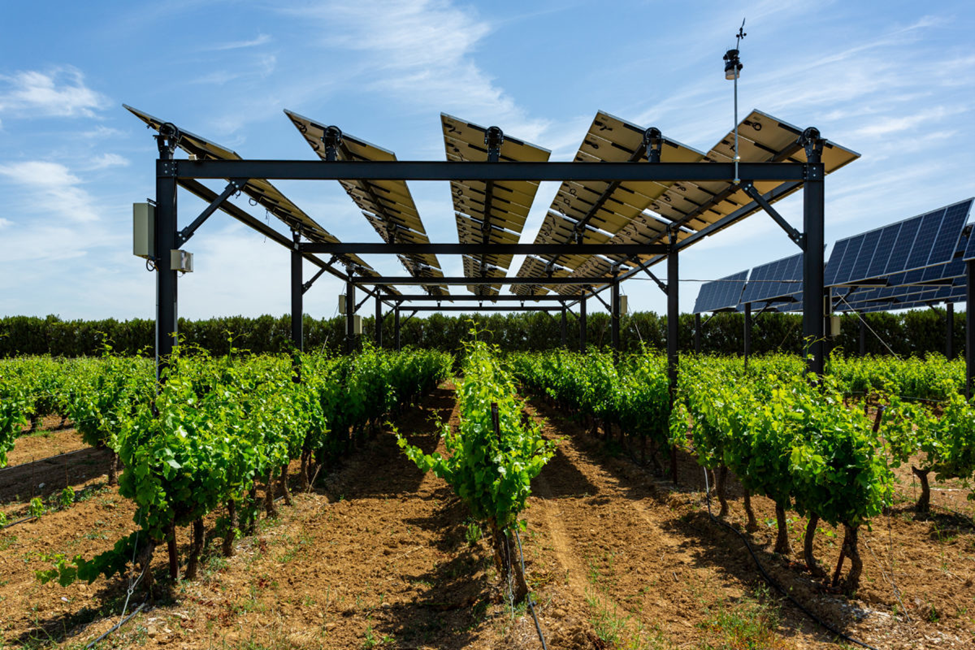
However, many farmers in Canada who have watched farmland get gobbled up for industrial uses are skeptical. They fear opening agricultural land to lucrative solar installations could lead to an increased loss of farmland if farmers turned agricultural land over to lucrative solar installations. Critics question whether landholders or farmers would continue to bother farming if they can earn more through solar installations alone.
Although he acknowledges the benefits of agrivoltaics in some cases, Drew Spoelstra, president of the Ontario Federation of Agriculture (OFA) supports the government's ban announced last week as part of the government’s energy procurement plan.
“We continue to lose over 300 acres of productive farmland every day and this announcement is a step in the right direction to slow that loss,” Spoelstra said. “The Ontario Federation of Agriculture supports the initiative to protect our most valuable food-producing lands as their best use continues to be producing over 200 different agricultural products to feed Canadians and folks around the world into the future.”
The provincial ban limits diversification opportunities for farmers, Patrick Gossage, founding director & president of Agrivoltaics Canada, told Canada’s National Observer.
“We don’t tell farmers what to farm. They should have the choice,” said Gossage. “Now that the cost of solar has plummeted, we can build projects that co-optimize land for solar and agriculture.”
Agrivoltaics Canada estimates leasing land for agrivoltaics can be four times more profitable than leasing land solely for traditional cropping.
While Ontario is taking a cautious approach to solar development on agricultural land, other countries are forging ahead. The United States, for example, has invested heavily in this technology, with multimillion-dollar grants supporting large-scale agrivoltaic systems across the country. Europe and Asia are also leading the way with rapidly growing agrivoltaics markets.
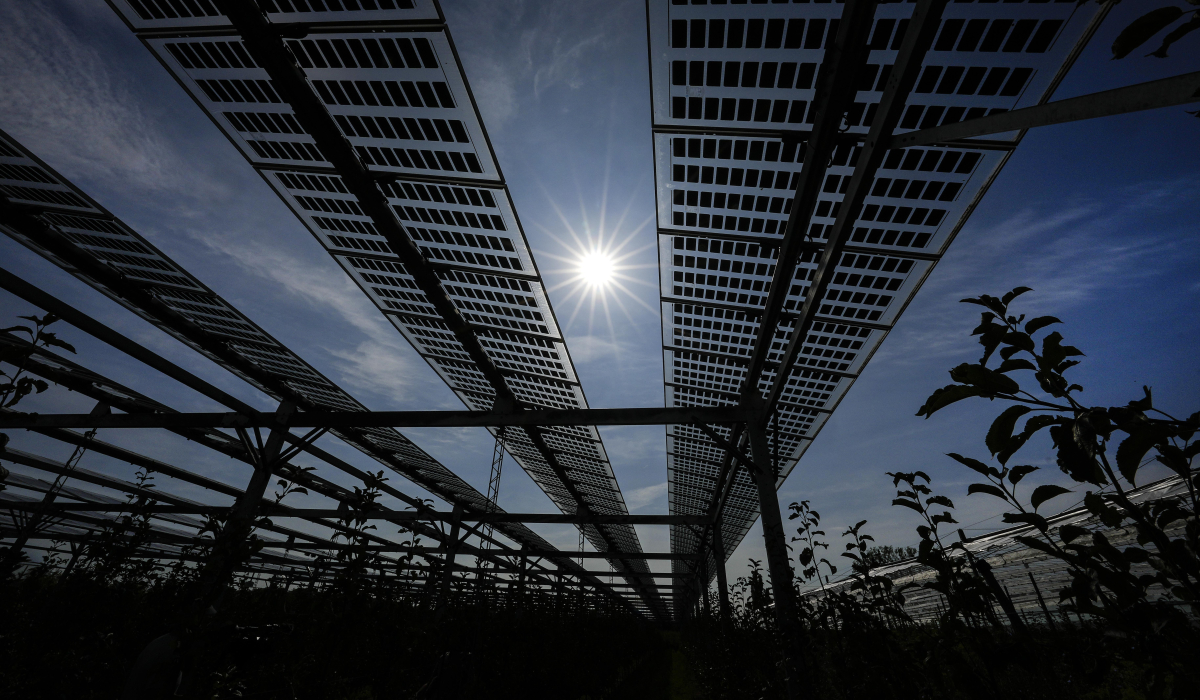
When asked about other countries where the technology is widely accepted, such as the U.S., Spoelstra pointed out that Ontario has a limited supply of farmland compared to the U.S. Only about five per cent of Ontario farmland is classified as prime agricultural land.
Spoelstra said agrivoltaics can be a viable option for diversifying agricultural operations, especially for livestock producers. However, he expresses concerns about the long-term sustainability of such practices. He notes that while agrivoltaics might work well initially, there is no guarantee that the land will remain in agricultural use over time. Without strict regulations, there is a risk that prime farmland could eventually be fully converted into solar farms rather than continuing its agricultural function.
However, research done in 2023 by Western University and Dalhousie University suggests marrying farming with solar can help maintain food production and help Canada achieve its goal to achieve 90 per cent non-emitting electricity by 2030.
Mike Carter, founding partner of First Green Energy and an advocate for agrivoltaics worries the provincial ban indicates a preference for natural gas over renewable solutions.
In 2023, Ontario's electricity was produced mainly from nuclear power, with solar energy accounting for less than one per cent of the total energy output.
Environmental advocates are urging the Ford government to phase out gas power by 2035 by tripling wind and solar energy and investing in energy efficiency and storage. They argue that this approach would rapidly reduce emissions and save money. Agrivoltaics could play a role in upping Ontario’s renewable power sources.
Crops grown on Ontario’s prime farmland include fruits such as peaches and cherries, grapes, apples and berries, vegetables and greenhouse crops. The Western University and Dalhousie University study found evidence that leafy greens, herbs and root vegetables thrive under solar panels. The partial shade helps conserve water, reduce heat stress and protect plants from extreme weather, boosting yields for crops like basil, broccoli and tomatoes — all while reducing greenhouse gas emissions.
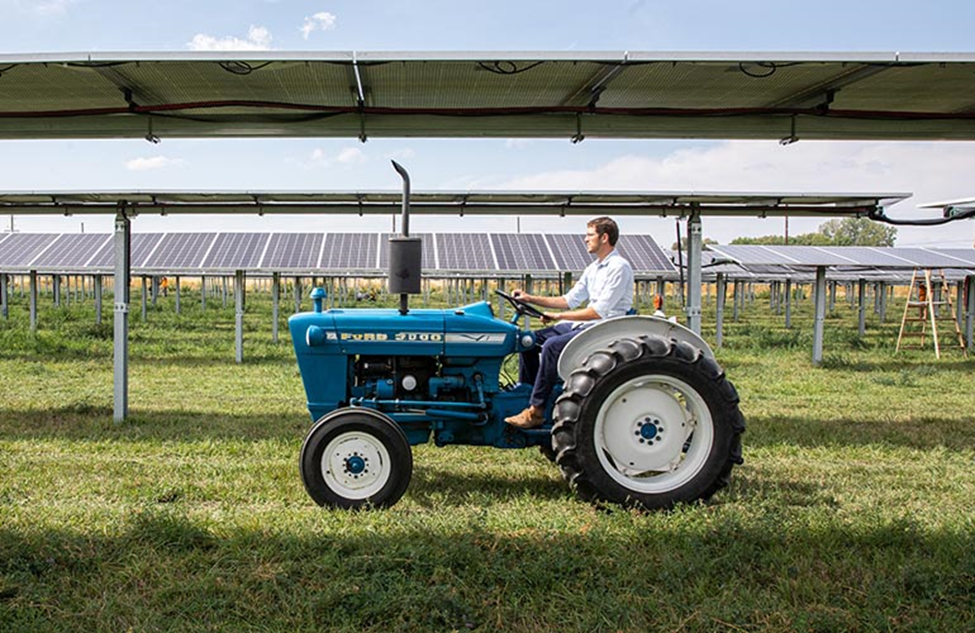
Gossage cited Texas as an example of a successful model, where solar grazing has significantly increased the size of sheep flocks. Ontario could reduce its dependence on imported sheep from New Zealand and Australia which now make up 70 per cent of the sheep consumed in the province.
According to the universities’ research, agrivoltaics can also reduce soil erosion, reverse desertification, increase agricultural employment, enhance local food production and provide additional revenue for farmers.
Gossage indicated that while limiting solar on prime agricultural land might have been a reasonable decision a decade ago, the situation has changed. “Solar is the cheapest form of new generation,” Gossage said.
Ontario's Minister of Agriculture, Food, and Agribusiness, Rob Flack, said in a statement that the ban on ground-mounted solar strikes a balance between protecting the province's agricultural capacity and advancing its energy goals. He said 871,000 people are employed in agriculture, representing one in nine jobs in the province, and that the sector contributes nearly $51 billion to the GDP each year. Ontario’s agricultural exports hit nearly $24 billion last year, exceeding local consumption, Flack added.
As Ontario faces mounting pressure to find viable and immediate renewable energy solutions, advocates say the Ford government’s decision could be a missed opportunity for advancing the province’s clean energy goals.
Carter warns this move could significantly hinder Ontario's ability to meet its renewable energy targets.
“Agrivoltaics offers the lowest cost, most rapidly buildable and lowest risk in cost and resource variance of any of the technologies,” Carter said. Other renewable energy sources like wind, hydro and nuclear face significant deployment challenges and lengthy timelines.
Pearce suggests that the Ford government's decision reflects a lack of awareness about the benefits of agrivoltaics, a technology still in its infancy in Canada. “Agrivoltaics have a real shot at reducing food prices while helping us get to net zero emissions,” he said.

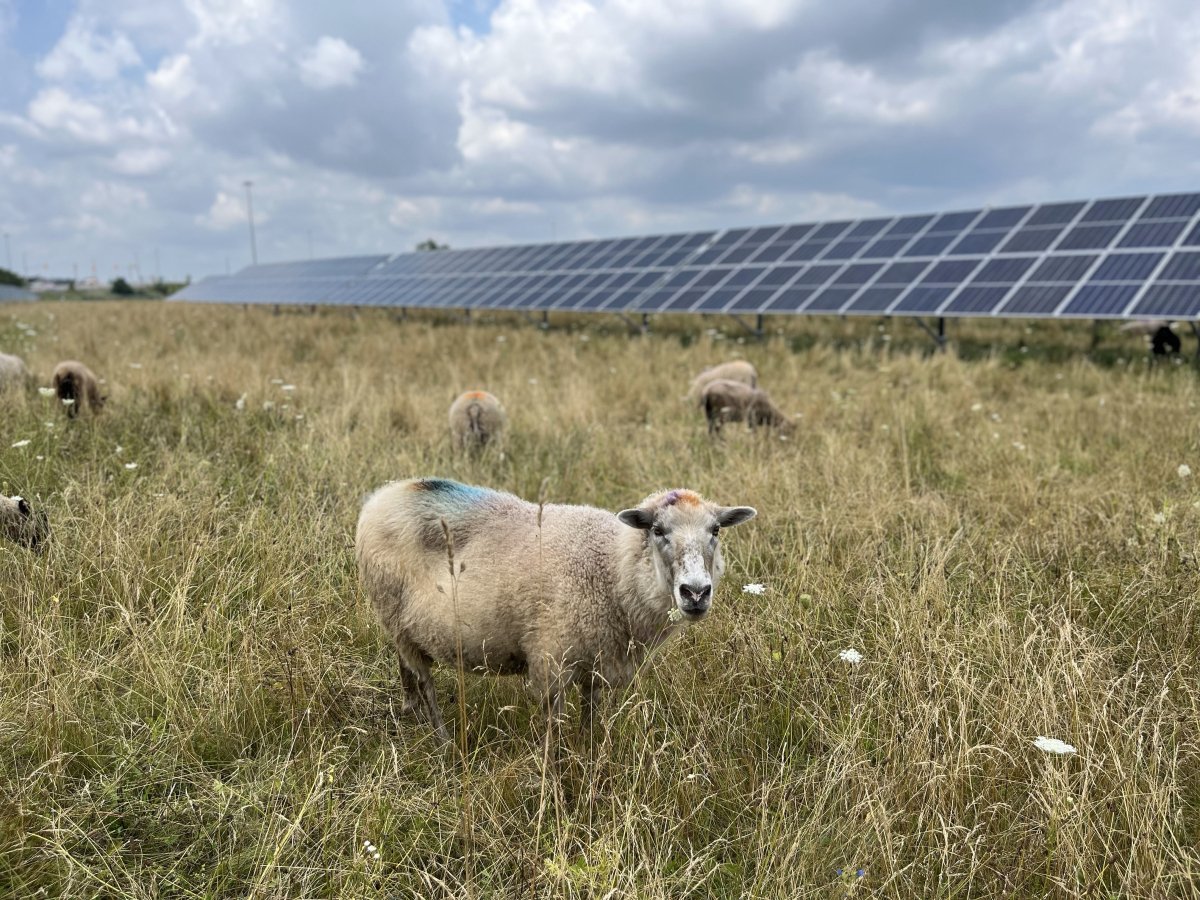

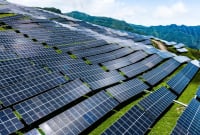

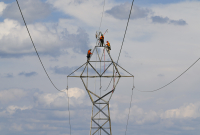
Comments
Doug Ford has no problem opening up farmland for rich developers or for building highways but has an issue with solar panels which provide a source of cheap energy and enhance production of certain crops. Meanwhile other countries are embracing renewable energy and leaving Canada behind.
Excellent comment. I thought exactly the same thing as I read the article.
As did I. It's the height of hypocrisy, while also showing vast ignorance of the impacts of climate destabilization on agriculture.
Re: "Without strict regulations, there is a risk that prime farmland could eventually be fully converted into solar farms rather than continuing its agricultural function." Well, DUH! Of course there have to be strict regulations. Including regulations that the farmers won't liable for any damage to the solar systems due to extreme weather events.
What is it about politicians? Do their creative and critical thinking skills automatically get turned off the moment they're elected?
Totally agree! When it comes to Doug "The Thug" Ford, things like solar panels, wind farms get in the way of his corrupt developer donors consuming farmland to fill their pork barrels. Ford, Moe and Smith all Conservative are just a precursor what Pierre "Snake Oil Salesman" Poilievre do once he is elected to the rest of the country. Expect Pee Pee will erode LGBTQ+ and women's rights, more healthcare cuts & privatization, education cuts and more, all to satisfy corporate greed.
It's weird (word of the season) to even defend things against bullshit arguments against them. They spend 15 minutes thinking up the lie, you spend 15 hours patiently debunking it.
Just keep pushing "Clearly Doug Ford hates solar and wind jobs for ideological reasons, he thinks up silly arguments against them" is both more honest and more effective.
Many plants are grown to collect energy rather than food, such as corn and canola. There must be scientific publications that compare the efficiency of these biofuel cultures with direct solar capture. Both systems require additional intrants, such as fertilisers, fuel or other energy, mining of minerals and water, which must be considered carefully. Water is very precious in certain areas. If plants and solar panels can utilise the same area, the system efficiency should be higher.
If animals are raised in the same are as solar panels, the efficiency is probably higher again. However, sheep are not a good choice because they are the worst emitters of methane (CH4) of all ruminants. Pigs would be much better.; chicken are the least emitters.
Installing solar panels does not ruin the land as roads and buildings do. Panels can be removed later, and the land restored to its original condition.
Note that windmills can cause significant damage on the land because of the need to build footings and roads. The government should restrict windmills to poor quality lands.
It is appropriate for the government to restrict the use of agricultural land to preserve the capacity of food production locally, provincially or in the country; solar panels are compatible with this policy. The farmer should decide how best to use his land as long as the aim of the policy is achieved.
Any farm land currently growing crops that are turned into ethanol or other biofuels should be allowed to have solar panels installed. The amount of useful energy produced is significantly higher than liquid fuels by several orders of magnitude.